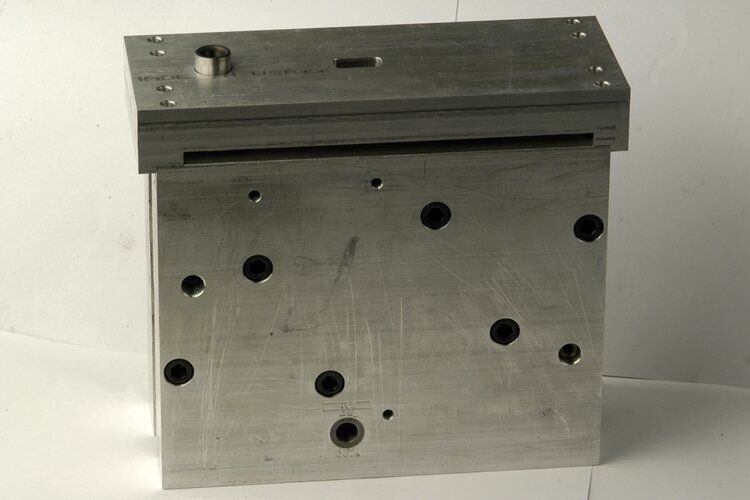Back in 2013, I ran across the KT Ordnance website which featured a partially finished 1911, which was the first 80% that I had ever seen. I thought wow, you can actually build your own firearm, how cool is that! I did some more research, and found that some people on the Calguns website were putting together a “group buy” for Sig P226/229s from KT Ordnance.
I jumped at the chance to be on the list, sent in my money, and waited impatiently for the frames to be completed. After several months, the frames were sent out and people started building their Sigs. There were problems, the frames were not made to spec, and really needed a mill to complete them. I could see that a lot of the people in the group didn’t have a mill, so I decided to make a jig to help them out.

At the time, I had just started this machining business, and was only making M1 carbine tools. The jig I came up with for the Sigs cut the holes for the frame, and used a drill press to cut the rails with a keyseat cutter. I believe it was the first rail cutter, but it had drawbacks, like chatter, and the cutter life was short in hardened steel frames. Anyway, I made four of them and loaned them out to people in the group for free, which enabled a lot of them to complete their frames.
From that experience, I decided to make rail cutters for the 1911 80% frames that were becoming popular, and eventually I wanted to make Sig frames. But first, I felt I needed a better rail cutter design. So in my spare time, I worked on a rail cutter that had a slide with which you pushed the cutter across the frame, completing one side at a time.

Eventually I had a working prototype, but Stealth Arms came out with their Phantom Jig, which was essentially what I was going to come out with, but they beat me to it! I was… depressed. I ordered one of their jigs and was impressed with their design and packaging. I didn’t want to introduce my new rail cutter because the Stealth Phantom was as good or better, so I pretty much decided to give up on making rail cutters and focus on other products.
Over time, I started to hear some negative feedback about the Phantom Jig, like it has a difficult time cutting steel and stainless steel frames. So, I started thinking that maybe there was an even better solution for cutting the rails, and started designing a new rail cutter, one that could cut hardened frames and also cut both rails at the same time.
(Please note, I nothing but respect and admiration for Stealth Arms, and everything I have heard about Stealth Arms has been very positive.)
I went to work designing and building the prototype. I wanted to get it into production as soon as I possibly could, still smarting from being late on my previous design.
I remember clearly the day we tested the new rail cutter, there are few things that are as gratifying as seeing a design come to life and work well.


Carl Robinson
Where can I go to find the 1911 resources listed on instructions that came with my 1911 rail and barrel seat cutters. I’m referring to the instructional video referenced in step 1.
David
Hello Carl,
Sorry for the late reply. Apparently youtube took the video down for violation of their acceptable use policy.
Russell
Can you put it on Rumble or Direct Email it?
David
Let me see if I can find it.